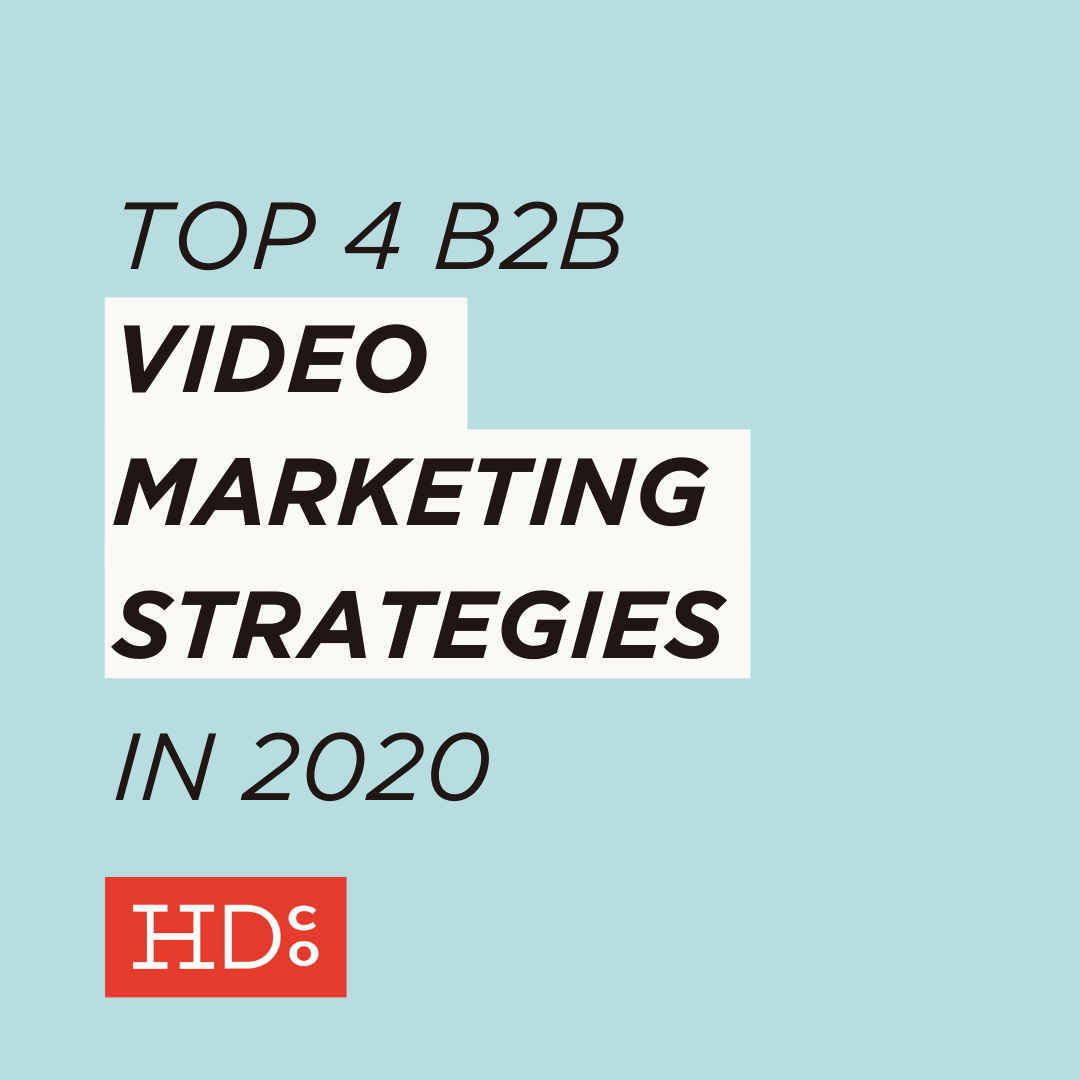Top 4 B2B Video Marketing Strategies in 2020
This is a guest blog written by Petros, a digital marketing executive at London-based agency Minttwist.
Video marketing has become increasingly popular in recent years, and the trend is here to stay. Research shows that 72% of people prefer to watch videos to learn about a new product or service. Regardless of what industry you’re in, you need to approach your video content with a strategic mindset so that it gets the most interaction from your target audience.
This blog will explain how you can use videos to best market your products and services.
1. Choose the right social media platform
It’s important to prioritize sharing your video content on platforms that generate the most interaction. Currently, Youtube is the top video-sharing platform. LinkedIn is also a great platform for B2B video content because its algorithm favors video posts. However, posting on these platforms alone does not guarantee strong engagement. You need to carefully study what topics your audience enjoys and cater your videos toward their taste.
Which platforms should you share video content on?
- Youtube, Instagram, LinkedIn, Twitter, Facebook, Reddit, your website
2. Choose the video length that best suits the platform you use
On Youtube, Reddit, and your website, video length doesn’t affect whether or not you generate strong engagement. You don’t have to worry about making your videos “the perfect length” because both short and long videos are popular on these platforms. However, you need to be intentional about filling your video with valuable information so that your audience is compelled to watch your content.
Facebook, LinkedIn, Twitter, and Instagram are feed-based. Users on these platforms scroll through loads of content, so it’s easy to get distracted by other content that appears on the feed. For example, the average Facebook user typically wouldn't watch a 10-minute video because push notifications encourage viewing new and different content. This is why short-form videos perform better on these platforms.
To best promote your business and drive traffic to your original videos, post clips of your long video in a trailer-like form. Link to your full-length Youtube video on your Twitter page, or post IGTV to your Instagram story. This strategy will help expand your reach and maximize audience engagement.
3. Leverage native videos for maximum engagement
Native videos are the videos you create and upload straight to social media as opposed to linking an existing video from another hosting site (e.g. YouTube) to your feed. Yes, you can upload video files directly to social media platforms - and you should!
Why? The answer is simple, and it’s based on a fundamental principle of all the major platforms: make users stay on the platform for as long as possible. If your video links users to sites other than the platform itself, social media algorithms will curb your organic reach.
LinkedIn rewards native videos and offers more opportunities for brand reach, connection, and distribution than other platforms. Native videos are also given priority on feeds, which generates higher visibility and engagement.
Although Facebook and Twitter still work for business marketing purposes, they require far more effort - and money. In fact, LinkedIn is 277% more effective for lead generation than Facebook and Twitter.
LinkedIn also offers an untapped space for discovering leads, and for all your B2B marketing activities, because it provides a large audience. There are 300 million monthly active users, but few of them are aharing videos. This is no surprise, considering only around 1% of LinkedIn’s million monthly users share posts.
If you’re not using LinkedIn to post videos, you are missing out. LinkedIn’s beta program suggests that native videos are five times more likely to initiate a conversation among LinkedIn members than other content.
4. Focus on your audience
The foundation of your video marketing efforts has to be audience-oriented. Creating video content that is relevant to your audience will significantly impact conversions.
If people who watch your visual content understand your message as a solution to their problem, then they will consider investing in your products or services. Do not simply inform them of your offerings, but also explain how you can solve their problems.
Set your intentions in the first few minutes and get to the point directly. And to get the most eyes on your videos, use SEO methods to create optimized titles, include meta descriptions, feature keywords, and even use hashtags.
Bonus tip: Put these videos on your services page; it leads to more conversions.
Final Takeaways
Find which platforms your audience is on and focus your video marketing efforts on these platforms.
Pay attention to when it’s better to post long or short-form videos. On Youtube, Reddit and your website, lengthy videos don’t impact engagement. Whereas on LinkedIn, Facebook, Twitter, Instagram, short videos (1-3 minutes) should be your priority.
Consider native videos for any platform you may use. Create and post your videos directly to the platform rather than linking to another hosting site. LinkedIn is critical for native video marketing because it’s a great opportunity for extended organic reach.
Keep your audience focused on everything you do by answering frequently asked questions. Make your point clear from the beginning and show your audience that your products or services are worth their money.

